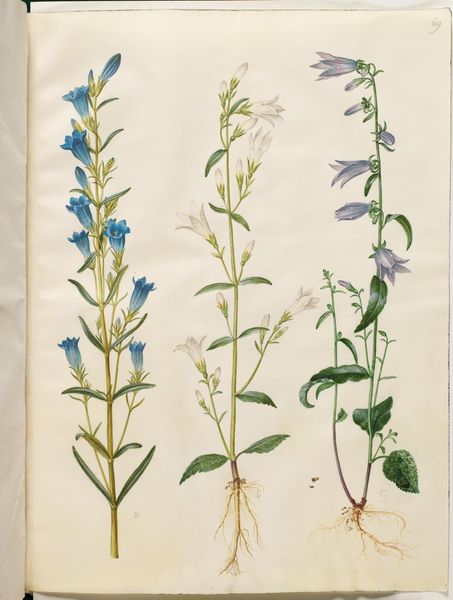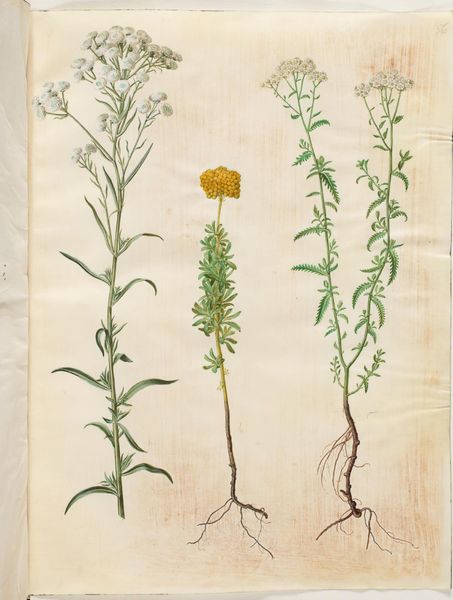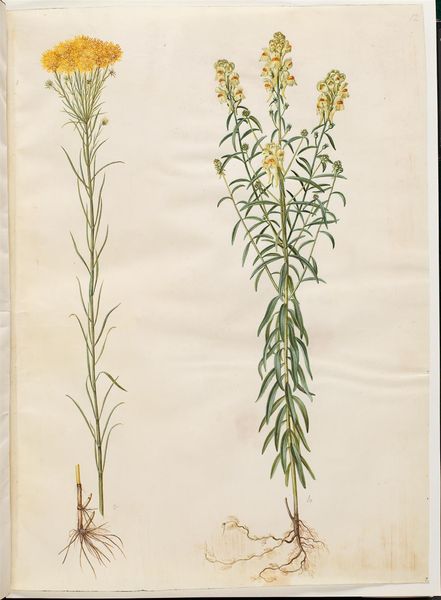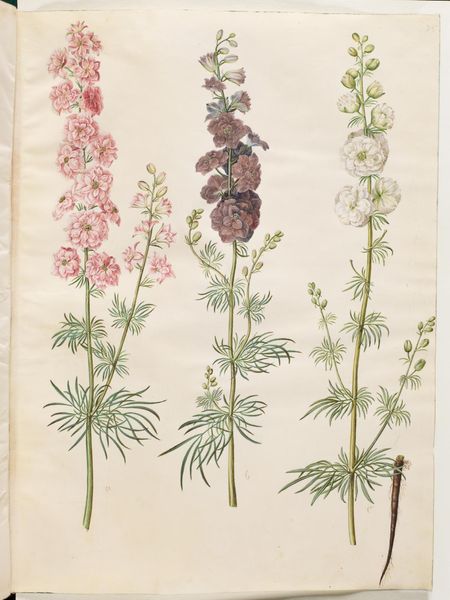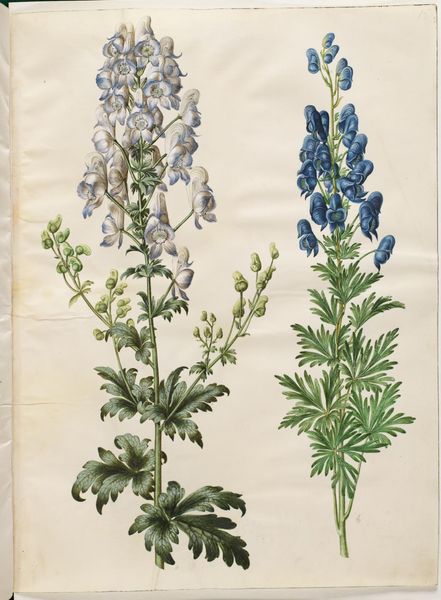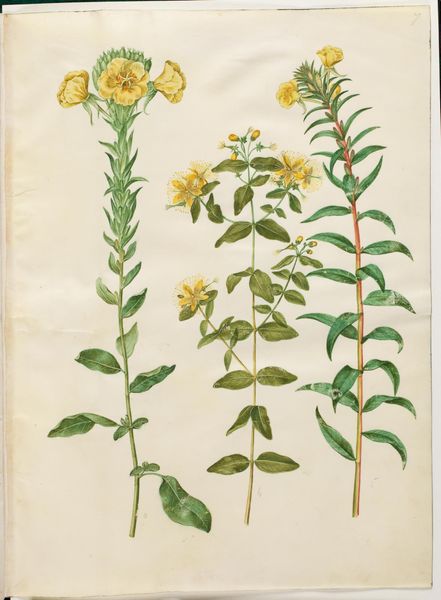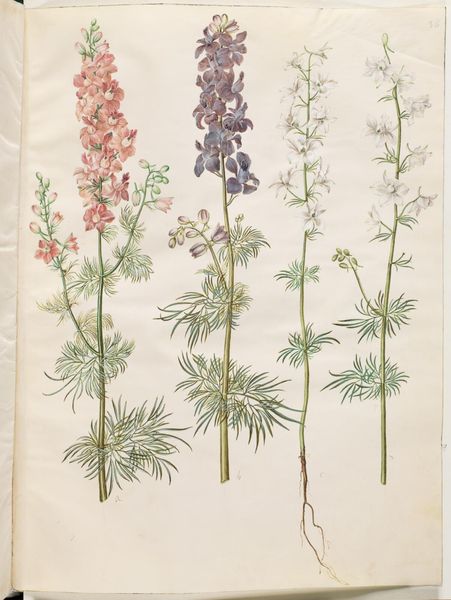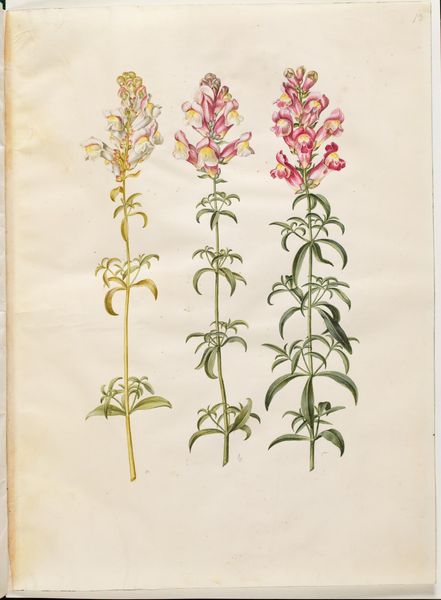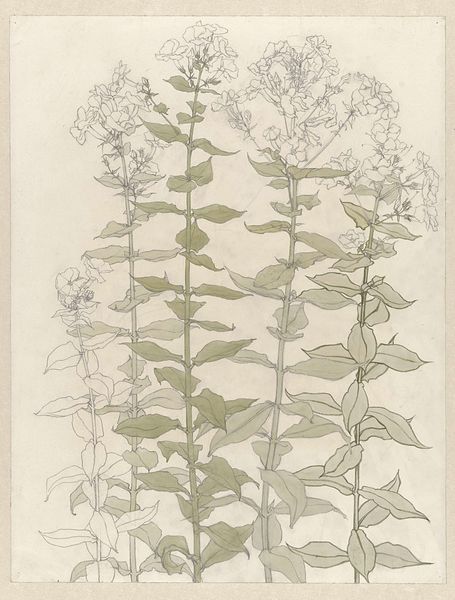
Mentha pulegium (polej-mynte); Mentha cervina (hjorte-mynte); Mentha (art af mynte) 1649 - 1659
0:00
0:00
drawing, gouache, watercolor
#
drawing
#
gouache
#
watercolor
#
botanical drawing
#
botanical art
#
watercolor
Dimensions: 505 mm (height) x 385 mm (width) (bladmaal)
Editor: This is a botanical illustration from sometime between 1649 and 1659 by Hans Simon Holtzbecker, housed at the SMK in Copenhagen. It's watercolor, gouache, and drawing on paper, depicting three varieties of mint. I’m immediately struck by how delicate the artist's hand was to render all these leafy plants. What specifically draws your attention about this piece? Curator: Formally, the arrangement immediately establishes a strong vertical rhythm. Note the repetition of the leaves and flowers along each stem, guiding the eye upwards. Holtzbecker's masterful use of watercolor is also apparent. Observe the translucency and layering of the greens that gives them such lifelike form. Do you perceive any deliberate variations in line weight? Editor: Yes, definitely. The roots seem more detailed with thinner lines. The flowers look to have fainter outlines to emphasize their delicate blooms. Does this contrast in linework have any impact on how you view the overall composition? Curator: Indeed. This variation reinforces the importance of each botanical element and also the hierarchy of its details. Notice how, in paying attention to these minute differences, the essence of the natural specimens emerges. We are not just seeing ‘mint,’ but an analytical portrait of botanical structures that is very methodically and meticulously planned in the structure of the illustration. Do you agree that this focus elevates what could easily just be 'pretty,' into the sphere of studied artistic observation? Editor: Absolutely. Focusing on how the artist’s methods shape how we perceive it turns these lovely drawings into serious artworks! I didn't expect so much intentional design to come through so clearly. Curator: Precisely. Analyzing its structure allows for such discoveries.
Comments
No comments
Be the first to comment and join the conversation on the ultimate creative platform.

